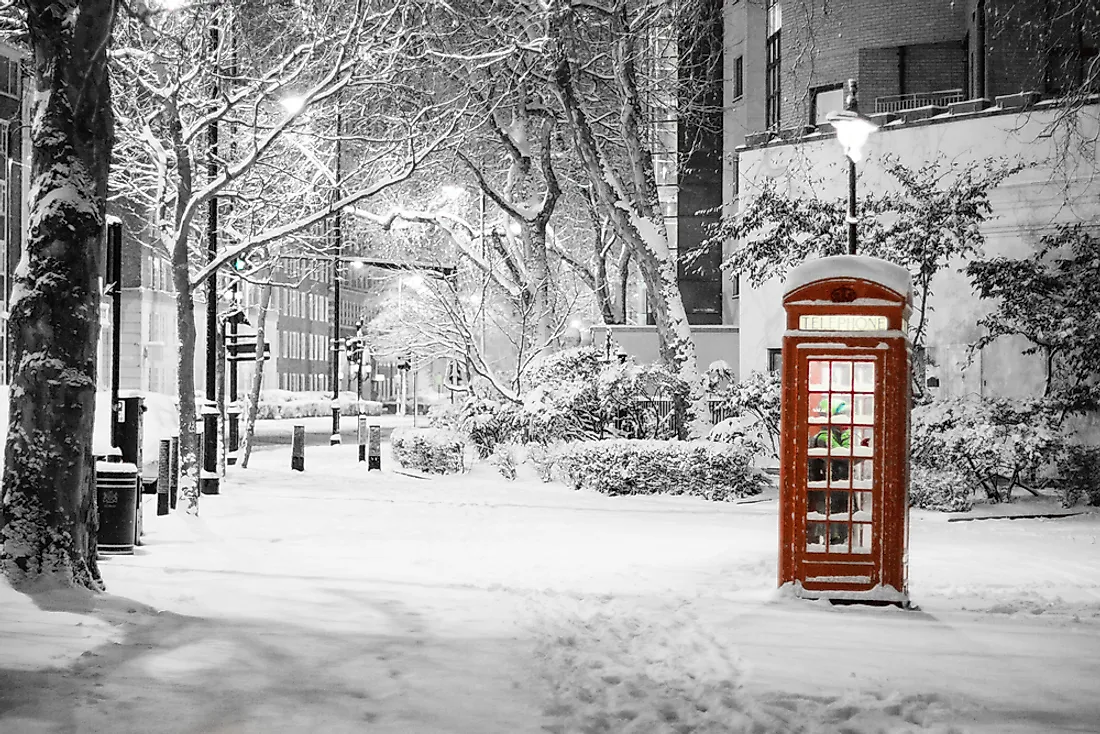Does It Snow In London?

London is the largest city as well as the capital city of England and the United Kingdom. The ancient city has a temperate oceanic climate with varying temperatures around the year. Summer temperatures range from warm to hot while the winters are generally mild and cool. Snow rarely forms in London. As a large urban center, the city of London experiences a type of climate that is associated with large cities in an effect known as the urban heat island effect. For this reason, the central parts of London sometimes have a slightly higher temperature (by about 9° F) than the suburbs in the outskirts. Since the central region is warmer than the outskirts, the central region experiences even less snowfall than the suburbs.
Data from the Met Office shows that, on average, the central parts of London experience less than 10 days of snow or sleet every year. In the case of the whole of the United Kingdom, for data between 1981 and 2010, the whole of the UK gets an average of 23.7 days of sleet or snowfall annually. For the few days that it snows in the central parts of London, the snow rarely settles since it melts away extremely fast. The outskirts of the city and areas with higher altitudes get more snow.
London Snow Events
One of the earliest recorded snow events dates all the way back to September 25, 1885. Snow fell in London, making it the earliest date that snow has ever fallen in the city. Heavy snowfalls have been recorded in London in the past, for example in December 1981 and the early stages of 1981, January 1987, and February 1991. The snowfall from February 1991 lasted for a number of days thus making it the biggest snowfall in the history of London at that time. The 1991 snowfall was only beaten by another snowfall that happened between 2008 and 2009.
In February and March 2018, the city also experienced another major snowfall from a weather system from Siberia. The weather system, which was also known as the Beast from the East, collided with a storm (Storm Emma) leading to serious winter weather. The event that happened in February was much more serious than the one that happened in March. Unfortunately, the cold weather and the ensuing snowfall caused the deaths of at least 16 people directly or indirectly. Some of the casualties were from London while others were from outside.
Snow and Human Activities
Looking at the effects of the Beast from the East in February 2018 and a similar phenomenon in March, it is unsurprising that Londoners did not like the snowfall. A lot of businesses and activities were also put to a stop. For example, at least 100 flights with a destination or origin from Heathrow Airport had to be canceled. Another activity that was obviously affected was road transport. The snow covering the road made the roads treacherous and, secondly, the visibility of the drivers was severely reduced. One of the victims from this year’s snowfall was a seven-year-old girl who was killed after being hit by a car that slid off the road. From a general viewpoint, most people in London were disappointed when the second phenomenon delayed the arrival of spring.











